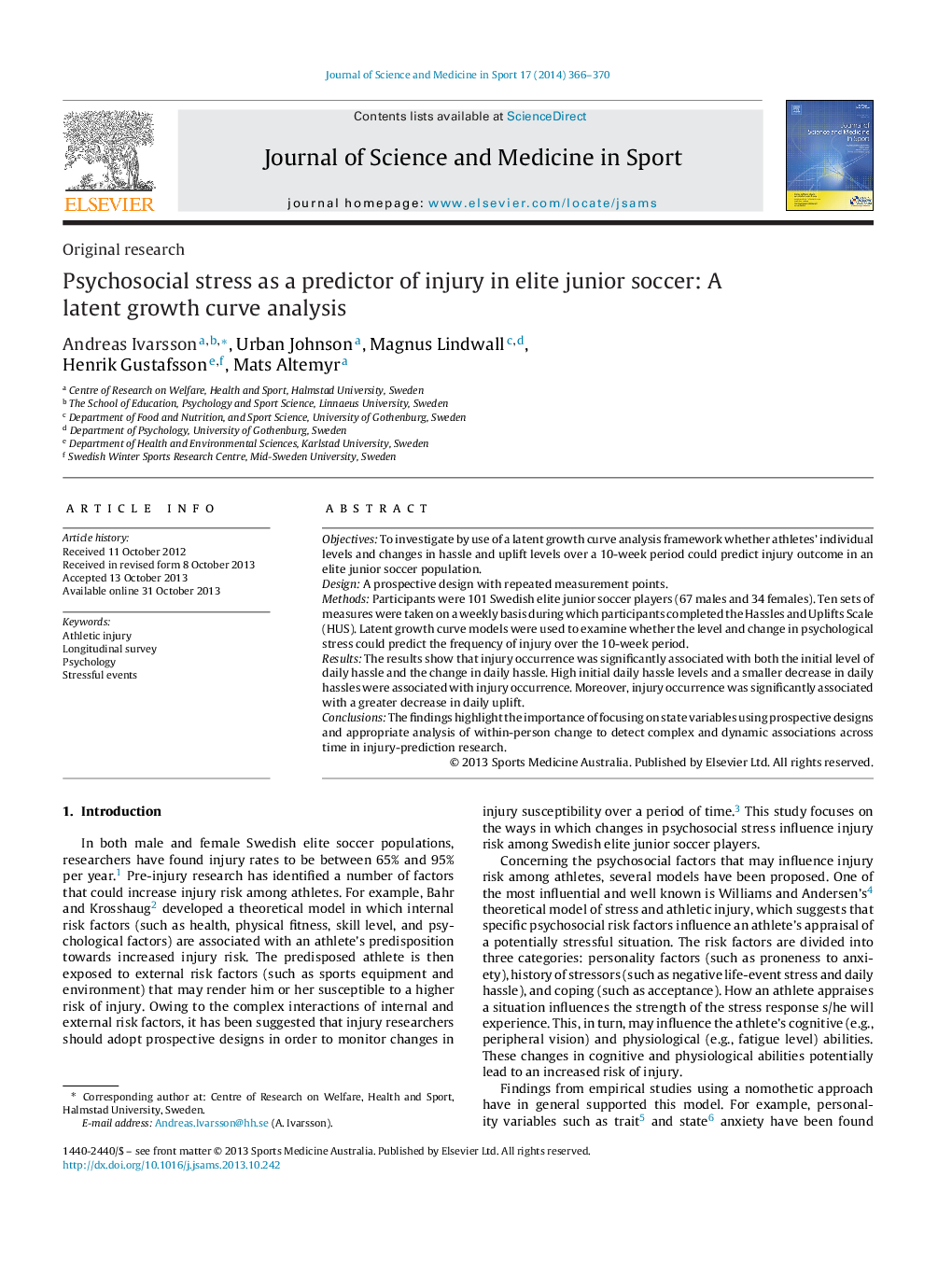| Article ID | Journal | Published Year | Pages | File Type |
|---|---|---|---|---|
| 2702829 | Journal of Science and Medicine in Sport | 2014 | 5 Pages |
ObjectivesTo investigate by use of a latent growth curve analysis framework whether athletes’ individual levels and changes in hassle and uplift levels over a 10-week period could predict injury outcome in an elite junior soccer population.DesignA prospective design with repeated measurement points.MethodsParticipants were 101 Swedish elite junior soccer players (67 males and 34 females). Ten sets of measures were taken on a weekly basis during which participants completed the Hassles and Uplifts Scale (HUS). Latent growth curve models were used to examine whether the level and change in psychological stress could predict the frequency of injury over the 10-week period.ResultsThe results show that injury occurrence was significantly associated with both the initial level of daily hassle and the change in daily hassle. High initial daily hassle levels and a smaller decrease in daily hassles were associated with injury occurrence. Moreover, injury occurrence was significantly associated with a greater decrease in daily uplift.ConclusionsThe findings highlight the importance of focusing on state variables using prospective designs and appropriate analysis of within-person change to detect complex and dynamic associations across time in injury-prediction research.
